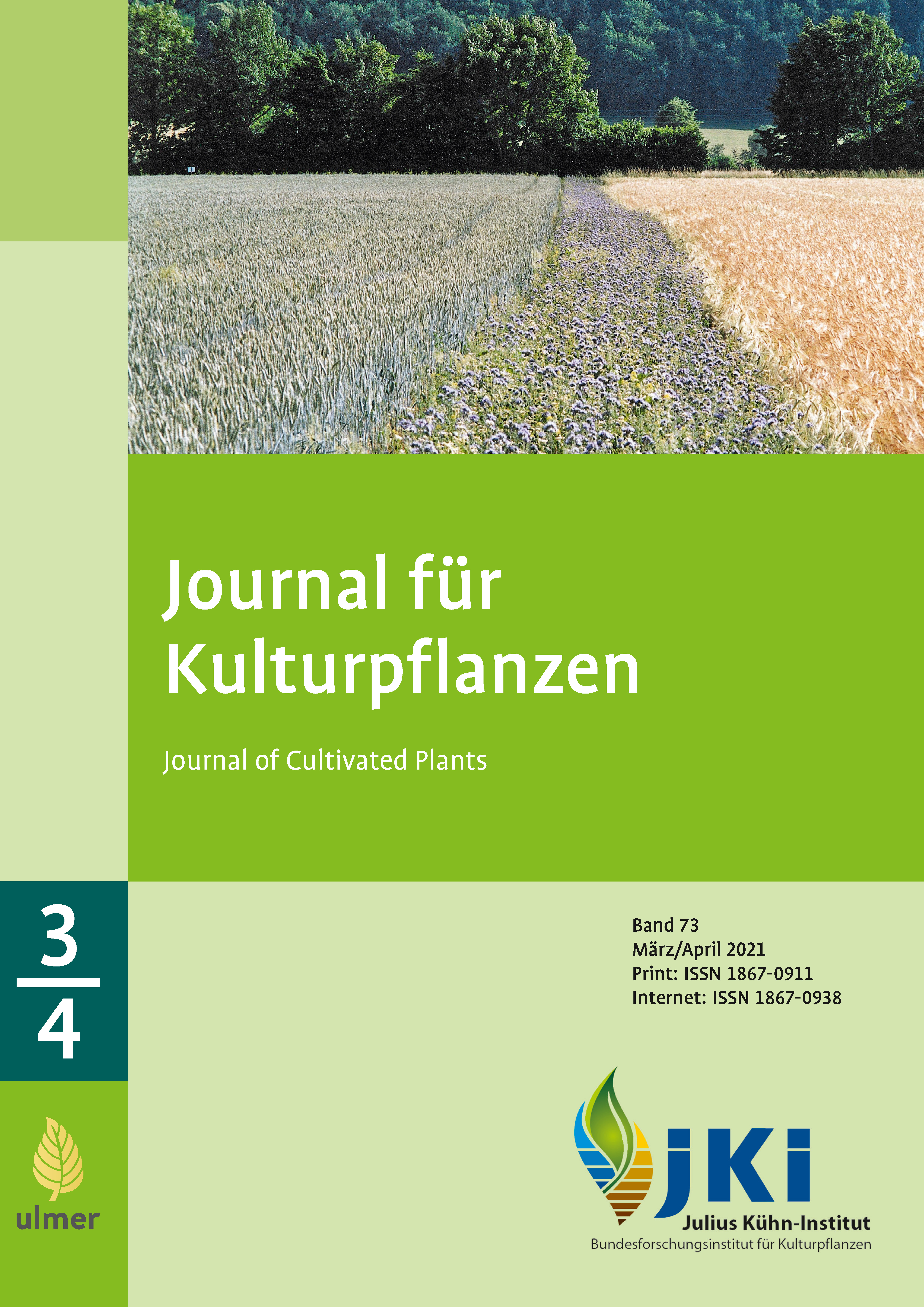Soil transmission studies with four pome fruit viruses
DOI:
https://doi.org/10.5073/JfK.2021.03-04.02Keywords:
Apple chlorotic leafspot virus, Apple mosaic virus, Apple stem grooving virus, Apple stem pitting virus, apple seedling, transmission rate, root grafting, soil water, RT-PCRAbstract
Soil transmission of the pome fruit viruses Apple chlorotic leafspot virus (ACLSV), Apple mosaic virus (ApMV), Apple stem grooving virus (ASGV) and Apple stem pitting virus (ASPV) was studied in pot and field trials. Non-inoculated recipient trees of apple seedlings were placed between inoculated donor trees, which were double-infected with either ACLSV/ApMV or ASGV/ASPV, and tested repeatedly by reverse transcription PCR (RT-PCR) for infections. In the first pot trial, a high potential for virus spread was demonstrated. 46% of the recipient trees were infected either by one or two of the viruses after four years. In a second pot trial, where the root contact between donor and recipient trees was restricted by a fine-meshed net, only a single virus transmission was detected. In a third pot trial, non-inoculated trees were watered with a soil eluate generated in the first pot trial, but no virus transmission was recorded. Moreover, no virions could be detected in the eluates generated from the first and second pot trial. The field trial consisted of two parallel rows of apple seedlings, where only one row was interspersed with virus-inoculated trees. In this row a total of five non-inoculated plants out of 44 (11%) tested positive for one or both viruses after 46 months. In the other row, which was planted one year later, only a single infection was found. The earliest virus transmissions in the field- and in the first pot trial were recorded after 17.5 months of exposure, however, most infections occurred between the third and fourth year. ACLSV was transmitted about twice as often as ApMV, whereas the rate for ASGV and ASPV was the same. The number of single and double virus transmissions was equal in the field, but in the first pot experiment single infections were recorded almost twice as often as double infections. There was no evidence that plant-parasitic nematodes were involved in virus transmission. The results of this study suggest that the transmission of all four viruses can be attributed to root grafting.
Published
Issue
Section
License
Copyright (c) 2021 The author(s)

This work is licensed under a Creative Commons Attribution 4.0 International License.
The content of the journal is licensed under the Creative Commons Attribution 4.0 License. Any user is free to share and adapt (remix, transform, build upon) the content as long as the original publication is attributed (authors, title, year, journal, issue, pages).
The copyright of the published work remains with the authors. The authors grant the Journal of Cultivated Plants, the Julius Kühn-Institut and the OpenAgrar repository the non-exclusive right to distribute and exploit the work.







